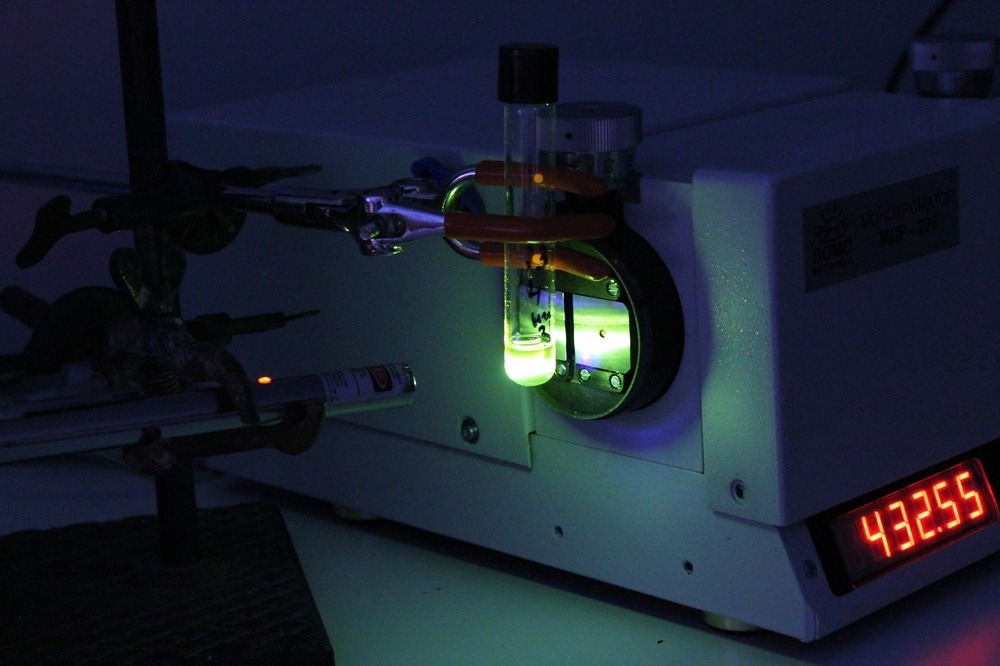Ferroelectric materials are crucial in various technological applications, including transduction, data storage, and nonlinear optics. The integration of halide perovskite nanocrystals with polymers presents an intriguing opportunity to enhance the properties and functionalities of ferroelectric materials.

Image Credit: Leo Matyushkin/Shutterstock.com
In a recent article published in the journal Nature Communications, researchers from China have presented the development of flexible nanocomposites by incorporating halide perovskite methylammonium lead bromide (MAPB) nanocrystals into a poly(vinylidene fluoride) (PVDF) matrix.
This study aims to enhance polarization and optical properties, making these nanocomposites promising candidates for various applications in flexible electronics and sensors.
Background
PVDF is a widely studied ferroelectric polymer known for its piezoelectric and pyroelectric properties. However, enhancing the polarization of PVDF-based materials remains a challenge.
The integration of halide perovskite nanocrystals into PVDF matrices offers a novel approach to improving the ferroelectric performance of these nanocomposites. Halide perovskites have gained attention for their exceptional optoelectronic properties, making them attractive for various applications.
By combining the unique characteristics of halide perovskites with the inherent properties of PVDF, such as flexibility and mechanical strength, the nanocomposites offer a synergistic platform for achieving high-performance ferroelectric materials with enhanced polarization and electromechanical properties.
Understanding the interplay between halide perovskite nanocrystals and the polymer matrix is essential for unlocking the full potential of these hybrid materials in advanced electronics and functional devices.
The Current Study
The synthesis of the nanocomposite films began by dissolving PbBr2 and MABr in dimethyl formamide (DMF) to prepare the MAPB precursor solution. PVDF powder was then fully dissolved in the MAPB precursor solution after vigorous stirring for 24 hours.
The resulting MAPB/PVDF composite solution, with varying MAPB volume fractions, was cast onto a glass substrate at 35 °C under atmospheric conditions to allow for solvent evaporation.
The films were then dried in an inert atmosphere to remove any remaining traces of DMF. Flexible films were obtained by peeling them from the flat substrates and drying them overnight at 40 °C. The thicknesses of the resulting MAPB/PVDF and MAPB/P(VDF-HFP) composite films were measured as 12 μm and 15 μm, respectively.
Various techniques were used to characterize the structure and conformation of the nanocomposite films. Fourier transform infrared spectroscopy (FTIR), Raman spectroscopy, and wide-angle X-Ray scattering were employed to analyze the films' crystalline structure.
X-Ray photoelectron spectra (XPS) were also utilized with a monochromated source for further structural analysis. These characterization techniques provided insights into the crystal phases, chemical bonds, and structural properties of the MAPB/PVDF nanocomposites.
Results and Discussion
The structural and conformational characterization of the nanocomposite films revealed intriguing insights into the interaction between the halide perovskite nanocrystals and the PVDF matrix.
FTIR and Raman spectroscopy analyses provided evidence of a strong interfacial coupling between the MAPB nanocrystals and the PVDF matrix, particularly after poling. The emergence of a new vibrating mode in the MAPB/PVDF nanocomposites post-poling, as observed in the FTIR spectra, indicated enhanced interfacial interactions induced by poling-induced Frenkel pairs.
Additionally, Raman spectra showed the retention of the γ-phase in the MAPB/PVDF nanocomposite after poling, contrasting with the partial transformation of the γ-phase in pure PVDF upon poling. This difference further underscored the unique interfacial coupling between PVDF and MAPB in the nanocomposite system.
The XPS analysis revealed a shift in the F 1s XPS spectra to higher binding energy in the MAPB/PVDF nanocomposite post-poling, suggesting electron transfer from fluorine atoms to MAPB induced by high voltage poling.
The decline in intensities of Br 3d and N 1s XPS signals after poling, along with the slightly reduced optical bandgap of MAPB and the shifting of the photoluminescence peak to higher wavelengths, supported the formation of Br vacancies in poled MAPB.
These vacancies generated extra positive charges, strengthening the bonding with F atoms in PVDF and promoting an ordered arrangement of dipoles towards the poling direction.
These results highlight the intricate interplay between the halide perovskite nanocrystals and the PVDF matrix, elucidating the mechanisms behind the observed polarization enhancement in the nanocomposite system.
Conclusion
The integration of halide perovskite nanocrystals into a PVDF matrix has demonstrated promising advancements in ferroelectric materials. This study highlights the unique interfacial interactions and polarization enhancements achieved in the MAPB/PVDF nanocomposites.
The stability of the halide perovskite within the PVDF matrix and the multifunctional properties exhibited by the nanocomposites open new avenues for exploring their potential in flexible electronics and advanced functional materials. The successful synthesis and characterization of these nanocomposites pave the way for further research into optimizing their properties and applications in diverse technological fields.
Journal Reference
Wang, Y., et al. (2024). Halide Perovskite Inducing Anomalous Nonvolatile Polarization in Poly(vinylidene fluoride)-based Flexible Nanocomposites. Nature Communications. doi.org/10.1038/s41467-024-48348-4